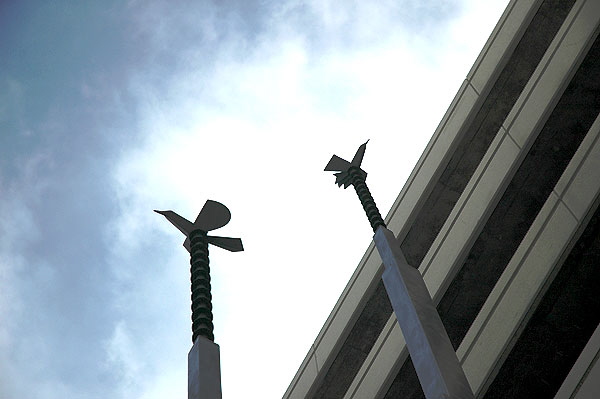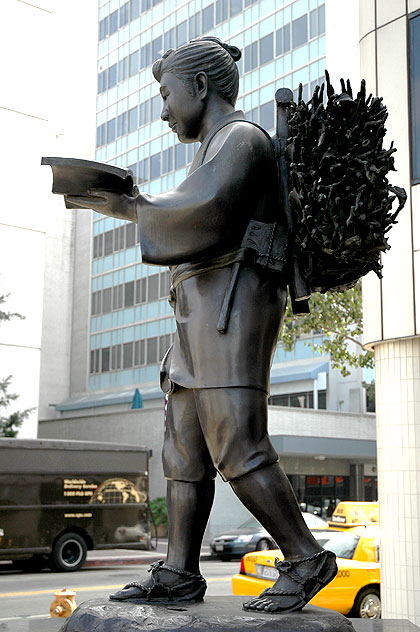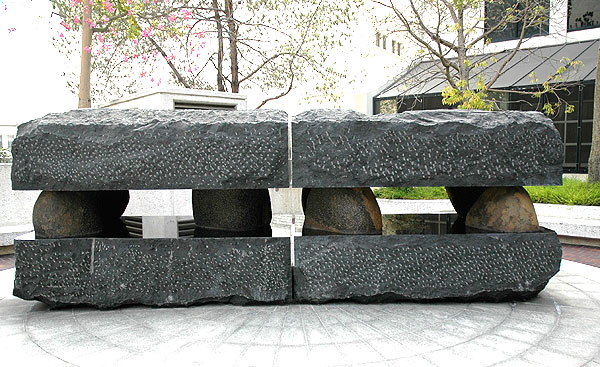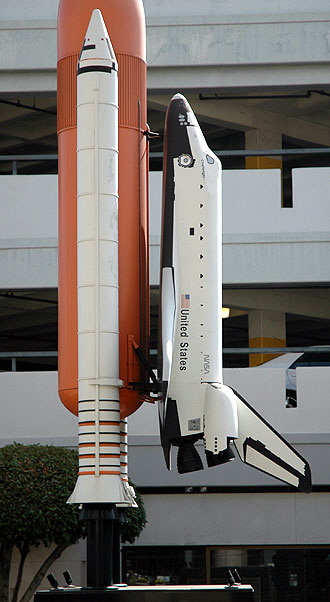|
Below - Towers of Peace, Prosperity and Hope, Michihiro Kosuge, 1989, 319 East 2nd Street
Conventional photo here and background here -
"When I was working on the design for this proposal," Kosuge wrote, "I was thinking about the peace and prosperity experienced by the people of Little Tokyo, as a symbol of all Japanese Americans. In my sculpture, I hope to express and convey this feeling."
Rather than executing individual towers for "peace" "prosperity" and "hope", he created an ensemble of three separate works, united by the title and a similar four-part structure. Three parts quote traditional Japanese motifs; one refers to a modern urban icon. Underneath an origami-style bronze bird capping each work, a 6' bronze section replicates the finial or garan of a Buddhist temple. Below the garan of the two tallest pieces is a thin stepped stainless steel section patterned after the Tower series Kosuge began executing in the late 1980s.
Imitating skyscrapers, which Kosuge described as "towers of power" because of their phallic references, the series was an outgrowth of Kosuge's architectural training in Japan. But unlike his gallery series, which often were painted, the surface of the three towers at the Allright Garage are highly polished. The lowest section of Kosuge's two tallest pieces is patterned after the forms of stone lanterns or toro found in traditional Japanese tea gardens. In the shortest of the three works, however, the toro section is above the tower.
The developer of the project, Allright Garage, invited Kosuge, along with Ruth Asawa, George Tsutakama and Susumu Shingu, to submit proposals for a sculpture that would fit into a base originally constructed for flag poles. Responding to the tight setting and the surrounding visual clutter, Kosuge designed tall works, proportionate to the scale of the site, to be viewed when people enter and leave the garage as well as by people standing on different garage levels.
|



